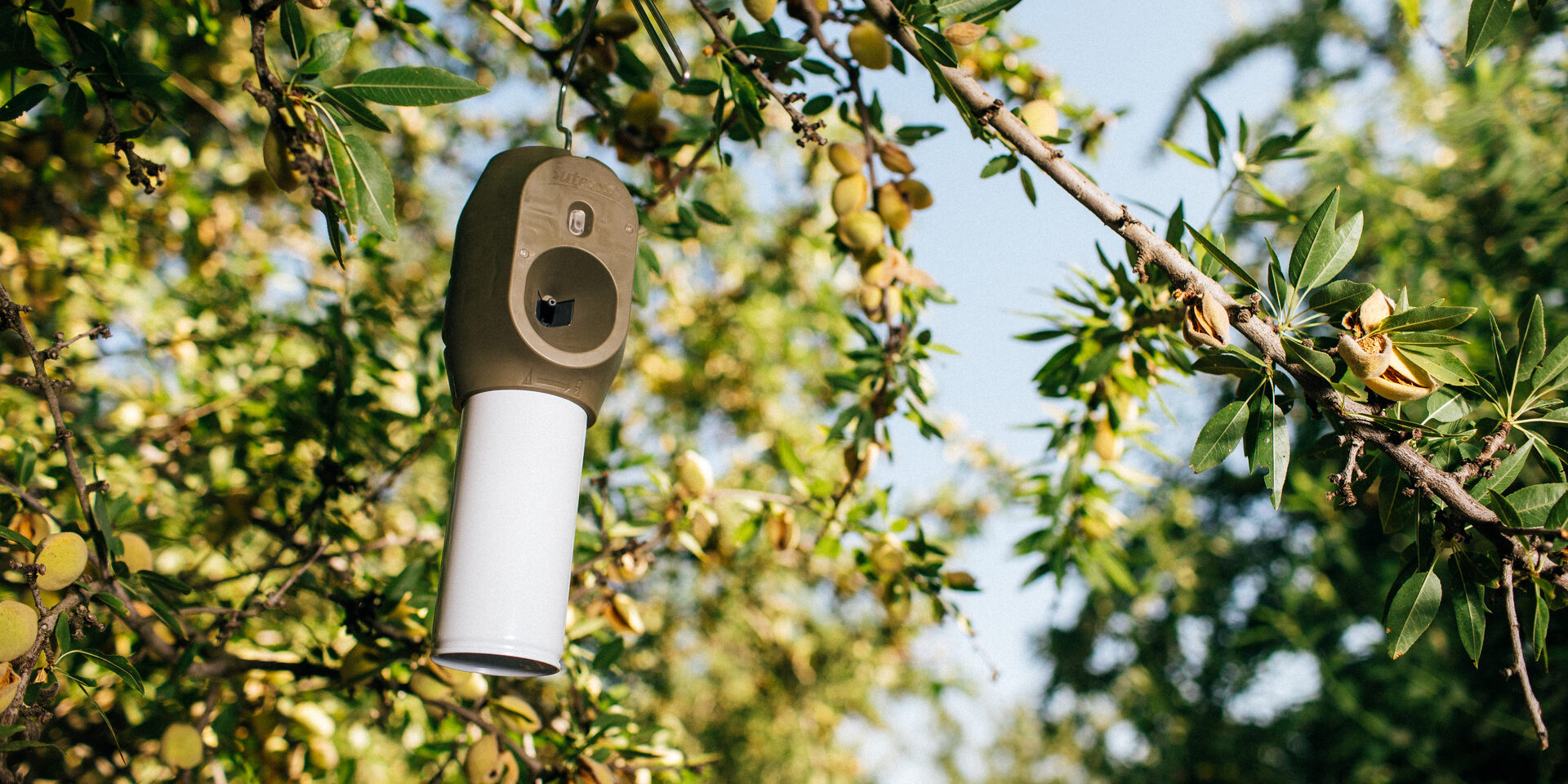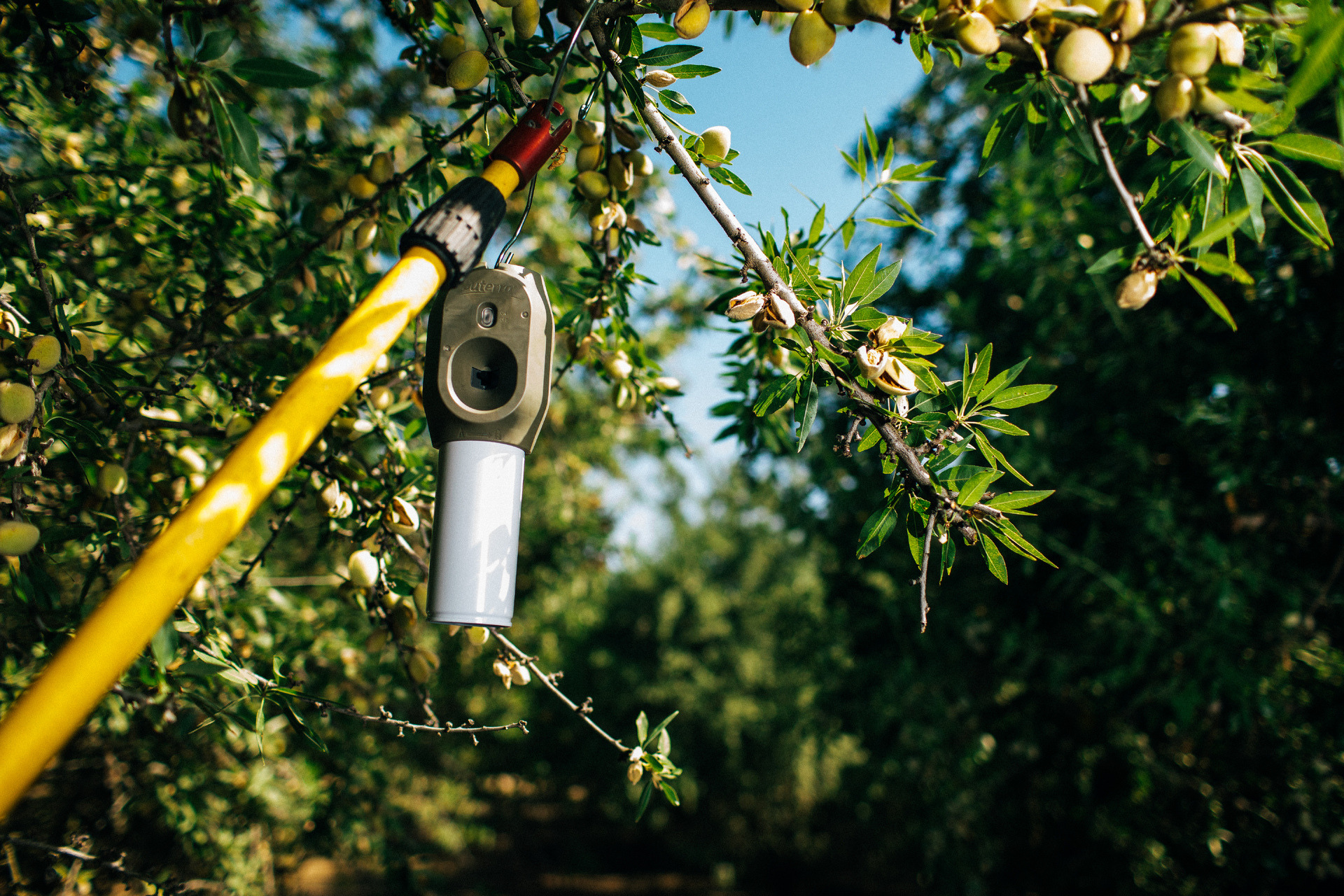Experts agree that mating disruption is essential to the California tree nut industry’s success against navel orangeworm (NOW). Growers considering adoption—or choosing between products—must weigh the pros and cons of quality, efficacy, and service.
Yet, to gauge the true impact and efficiency of the various potential solutions, a thorough understanding of Total Cost of Ownership (TCO) throughout the product lifecycle is also crucial. Common in technology purchases, TCO analysis can inform decision-making and ensure your crop receives the highest quality protection throughout the entire growing season.
Total Cost of Ownership
Total Cost of Ownership (TCO) goes beyond the initial purchase price. It encompasses all expenses tied to acquisition, deployment, operation, and maintenance throughout the growing season. For growers integrating mating disruption into their NOW control program, TCO incorporates factors such as:
Product Cost:
This is the cost for the product itself, invoiced by the retailer or manufacturer.
Questions to Ask:
-
- Is there a rebate available?
- Is there a volume discount or multi-year discount available?
- Has the price gone up from recent years or is it staying stable?
Deployment/Installation Costs:
This is the cost of installing the device, whether you pay your own labor crew or hire outside help. It may also include equipment rental or fees for services like mapping and orchard preparation work (e.g., flagging).
Questions to Ask:
-
- If product placement impacts performance, is professional mapping of product location included in the solution?
- Is deployment or installation included?
- If not, is labor training of your own crew included?
- If you’re hiring outside labor, have they installed this technology before? How long will it take them?
Operational/Maintenance Costs:
These are the continuous expenses that retailers or manufacturers charge for management including labor, equipment, and consumables. It may also include a risk calculation if the technology requires you to give up some privacy or security by providing on-going data to the manufacturer.
Questions to Ask:
-
- Does the solution include excellent customer service with text, phone, and email support and thorough customer satisfaction process with a company that stands behind their products?
- Does the manufacturer provide in-person service checks throughout the season from trained agronomists and certified Pest Control Advisers?
- Are past customers of this vendor satisfied with the customer service they received, or did they have to spend their own money on solving issues?
- If the vendor cannot be counted on to provide notice of having staff in your orchard, do you risk costs associated with safety violations or delayed sprays?
How Longevity Impacts TCO Calculations:
Because mating disruption solutions have varying durations, evaluating the longevity of mating disruption products allows growers to calculate a cost per acre per day. This is particularly important when comparing season-long solutions versus shorter acting options.
Questions to Ask:
-
- Is this the correct solution to meet the timing needs of protecting my investment?
- Does heat impact the longevity of the product? If so, what is the cost per acre per day in a hot year versus a cold year?
Environmental and Regulatory Compliance Costs:
Adhering to environmental standards and laws may incur additional costs, such as disposal or recycling fees for spent product materials. In California, growers face significant fines if e-wastes (including all aerosol units) and chemical wastes (including pheromone cans and dispenser strips) are not properly handled.
Questions to Ask:
-
- Does this solution include responsible removal and recycling at no cost to you?
- If not, how much will it cost to collect and responsibly dispose of the units each season?
Leveraging Total Cost of Ownership for Informed Decisions
For growers navigating NOW management, TCO analysis can deliver a more rigorous and methodical product selection each season, delivering strong return on investment and peace of mind for PCAs, growers and purchasers alike.
Suterra’s local account managers and customer care experts are happy to provide product information, cost estimates, and other support for TCO analysis. Contact Suterra's team today for help maximizing your investment in mating disruption solutions.


